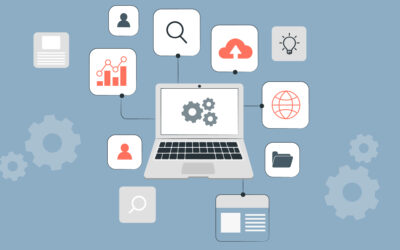Every seasoned project manager knows that projects are not completed in isolation. In fact, typically, most projects rely on the successful completion of different tasks/activities–often to be done in a particular sequential order. So if you wish to create a clear and consistent plan before the project kicks off the ground, you’ll need to have a clearer understanding of the dependencies within the project.
In this article, we will look at defining these ‘dependencies’and understand how you can better tackle them. Let’s jump right in.
What are the Dependencies of a Project?
Quite simply, dependencies within a project related to the relationship between various tasks/activities that are required to be completed one after the other. It is important to note that dependencies are associated with a different set of terms, such as:
- Project constraints: It refers to the ‘restrictions’–from cost (budget) and time (deadlines) to scope and resource availability–a project manager needs to adhere to.
- Critical path: It refers to the chain of activities that lead to a fully completed project. Any failure to adhere to the critical path can lead to project delays.
- Blockers/bottlenecks: It refers to any internal and/or external issues that can prevent the project from getting completed by hindering the movement of tasks through the workflow.
Some examples of project dependencies include (but are not limited to):
- A company’s digital media strategy is dependent on the creatives needed from the content and the graphic designing teams
- An employee’s productivity within the project is dependent on the use of right tools and technologies
- Technical issues and bugs can only be fixed if the root cause is identified early on
The learning: Dependencies in project management refers to managing and scheduling project tasks while factoring in the project sequences and requirements at all times. Considering that a project can have multiple tasks that are dependent on each other, things can get complicated and messy real fast if the managers do not stay on top of the project dependencies.
Now that you have a good understanding of what are project dependencies, let’s deep-dive to understand the types of dependencies in project management.
What are the Five Types of Dependencies in Project Management?
Here’s a quick lowdown of the diverse types of dependencies in project management and project scheduling:
- Logical/casual dependencies: This type of project dependency is essential for completing a project and is often found in the natural flow of tasks within the project. You can think of it as achieving the ultimate goal for all preceding tasks. Remember that logical dependency tasks cannot run in parallel with other tasks.
- Resource dependencies: It refers to resource-related project restraints that you may face within a project. In simpler words, if you have limited resources at hand for your project, any additional scope of work can lead to resource dependencies.
- Preferential dependencies: It refers to project dependencies that are defined by best practices, protocols, or preferred processes to ensure that the project quality does not get hampered.
- External dependencies: It refers to external tasks that are dependent on outside factors that are not within your control.
- Cross-team dependencies: This type of dependency is common in large organizations where multiple teams work on a single, complex project, depending on each other to finish the project on time.
Moving on, let’s look at the various types of task dependencies in project management.
Four Types of Task Dependencies in Project Management
In this section, we will look at some of the most common project dependencies that are specific to the tasks involved. Typically, there are four types of task dependencies to keep in mind:
- Finish to Start (FtS): One of the most common task dependencies and often used in the Waterfall project management methodology, this refers to a situation where Task B cannot begin until Task A is complete.
- Finish to Finish (FtF): This refers to a type of dependency where tasks have subtasks within them and where until the subtasks are not completed, the parent task will also stay incomplete. In other words, Task B cannot be completed until Task A is also completed.
- Start to Start (StS): This refers to a type of dependency where the second task cannot start before the first start begins. In simpler words, these tasks need to run in parallel with each other. For instance, your social media posts need to roll out in sync with a live contest that you might be hosting on your website.
- Start to Finish (StF): This refers to a type of task dependency where task B must start for Task A to be completed. If you have tasks that will overlap and need constant support, understanding this type of dependency is key.
Next, let’s look at the different types of functional dependency every project manager should know about.
What are the Types of Functional Dependency?
A functional dependency or mandatory dependency is a type of dependency where you are completely reliant on something to occur before the project moves forward. For example, you cannot start testing code that has not been written yet.
Project managers often leverage a Gantt chart to visualize and understand how the various phases are intrinsically connected.
Pro tip: To understand if the dependency is functional or nonfunctional, ask yourself the following questions:
- Can you complete the task independently of other tasks?
- Can you initiate the rest of the tasks without starting the parent task or the primary task?
If the answer to the above-mentioned questions is no, you’ve got your hands on a functional dependency.
This brings us to the next most important question:
“How do I Show My Dependencies in a Gantt Chart?”
As established earlier, dependencies define the relationships between tasks. You can use the Gantt chart to:
- Indicate when a task should begin or end in relation to other tasks
- View dependencies as lines linking two tasks or linking a task to a milestone
Pro tip: If you are using a Gantt chart to view your dependencies and wish to reschedule a task with dependencies, remember that all the dependent active tasks will also get rescheduled automatically. Plus, if some tasks in the dependency are finished, canceled, or deferred, these tasks will not get rescheduled.
Top-6 Tips to Manage Project Dependencies like a Pro
In the final section, we will run through the tips and tricks that can help you to manage the project dependencies better:
#Hack 1: Identify dependencies and constraints early on: Make sure to identify, visualize, and record all project dependencies with the project plan. It is highly recommended that you collaborate with different teams and list down all the related project dependencies. You can leverage visual tools such as Gantt charts and Kanban boards to make the dependency visualizing process easier as these allow you to demonstrate to your team members which phase your project is in and what type of tasks are dependent.
#Hack 2: Assign the right roles and responsibilities: It is not enough to simply list down the dependencies, you also need to assign who will be managing the dependency and will be responsible for it. Additionally, you’ll need to ensure that all the relevant contact information is updated within the project plan if you are dealing with numerous external dependencies.
#Hack 3: Ensure stakeholder engagement: Keep your stakeholders in the loop by ensuring that they understand the major project dependencies involved and how these dependencies can affect the final output/goal.
#Hack 4: Draft a risk log: If you want to mitigate risks, you need to maintain a risk log–one which lists down all the associated risks and constraints so that you can protect your project from external vulnerabilities.
#Hack 5: Create contingency plans: Preparing for contingency plans can ensure that your project moves forward, even when things seem to be going down South.
#Hack 6: Use project management software: The right kind of project requirement management tool can help you to manage your project dependencies with greater control and ease. Plus, you can manage your internal dependencies and ensure that you view your project plan, project activity, etc. all in one place.
The learning: Dependency management does not need to be overwhelming or complex. Plus, there’s no textbook formula to manage project dependencies. How you manage these dependencies ultimately depends on the project environment, your team, the project constraints, among other things.
The Takeaway
Every project is dependent on other tasks, events, activities, and situations. In other words, no project can be successfully completed in full isolation. What’s important to remember is that project dependencies can be simple or complex or internal or external in nature. Before you kick-start your project, it is critical that you have a crystal-clear understanding of the types of dependencies that might be plaguing your projects.
Here’s the long and short of it: Where there’s a project, there’s bound to be dependencies. So project managers need to diligently keep track of all the dependencies as well as constraints to ensure that the project gets completed successfully and satisfactorily.






0 Comments